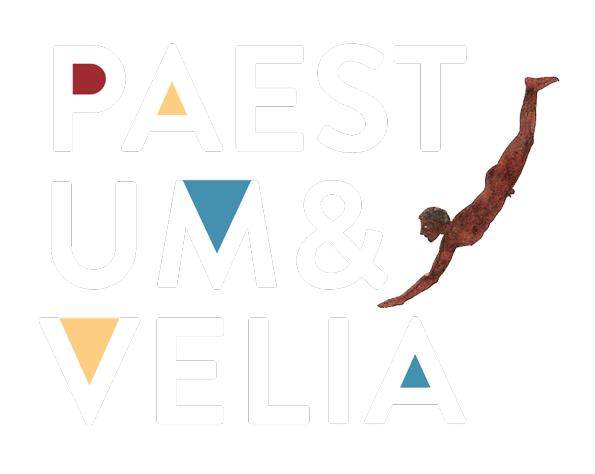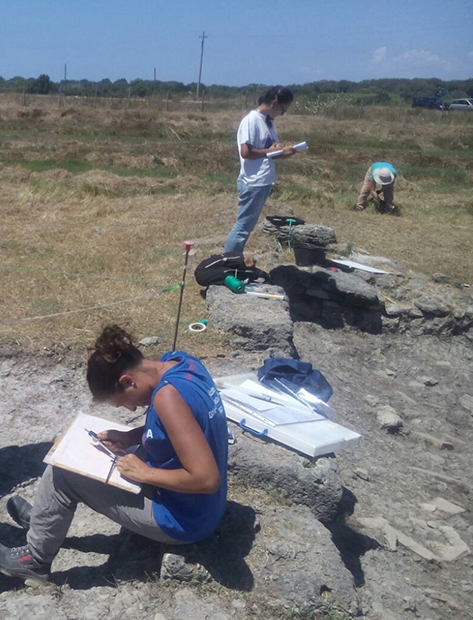DISCOVERING PAESTUM IN THE DIGITAL ERA


ear Readers,[br]
we will discuss here some of the things we (still) don’t know about Paestum which we would like to find out. Although Paestum is generally considered the best-known city in Magna Graecia, the site still poses many conundrums for archaeologists, architects and historians. This column, written this month by Emanuele Greco, takes a look at some of these perplexing issues.[br]
As is well-known, excavations at Paestum began under the direction of Vittorio Spinazzola in 1907. Until then, the city had become part of the international cultural imagination as a result of travellers who had extolled the splendour of the standing monuments – the temples and the walls – and published famous drawings, prints and paintings of them. Spinazzola was the first person to start a concerted campaign of excavations to remove the temples from their isolation, exploring the urban context in which they were set. Lengthy work on the site began although it was often subject to interruptions (for example, as a result of wars or lack of funding). The archaeologists explored the sanctuaries (chiefly through excavations and the unearthing of the large votive deposits) to the south (the Basilica and Temple of Neptune) and to the north (the Temple of Athena, also known as the Temple of Ceres). The whole of the Forum was brought to light (one of the best-preserved of the Roman cities in Italy, primarily due to the presence of monuments that date back to the origins of the Roman colony of Paestum, founded in 273 BC). More recently, between 1974 and 2000, I had the fortune, together with Dinu Theodorescu, Marina Cipriani and Agnès Rouveret, to work on the joint Italian-French project (known as the “Atlante project”) which involved the topographic and architectural survey of all the monuments that had been discovered, accompanied by test excavations aimed both at clarifying the dating which had not been completely clear until then, and, obviously, at finding out, albeit partially, more about the stratigraphy that lay beneath below. The main result of the research (published in the volumes of the series Poseidonia-Paestum I-V) was the discovery of the agora which makes it possible to reconstruct the general history of the forum with excavation campaigns devoted to the study of the walls at Porta Marina and at Porta Giustizia, followed by the research at Porta Sirena directed and published by A. Pontrandolfo and M.Cipriani. However, one crucial aspect of the life of any ancient city was still missing: the residential districts. A group of houses will be the subject of detailed research (see the volume Poseidonia-Paestum V); however, we began the first explorations in 1987 by working outside the archaeological park on privately owned land where we had the good fortune to investigate a large part of an archaic Greek house. It was fairly well preserved since it had not been covered by structures from later periods. While the exploration of the remaining part is being carried out by L. Ficuciello, I would like here to offer a few observations in the light of the excavation campaigns carried out so far. The house concerned does not date to before 530 BC and was abandoned in about 470 BC. We know from other sources (tombs, votive offerings and a terracotta roof) that Poseidonia was definitely founded in about 600 BC. Therefore, with regard to the issue at hand, we are faced with a gap between 600 and 530 BC. Since we have currently only excavated one house, we clearly cannot draw any general conclusions. With the start of systematic excavation campaigns below the Roman houses that are currently visible, we are sure that we will soon be able to gain information about a crucial aspect of urban life which we currently lack. We may even be lucky enough to find the settlements of the the first generation of Greek colonists (as happened at Megara Hyblaea in Sicily where our colleagues H. Treziny and M. Gras have identified traces of what they describe as “encampments”) or, much more probably (given the chronological distance between Megara which dates to over a century before Poseidonia) domestic structures (houses of two or three rooms with a courtyard) which are known from excavations in various areas of Magna Graecia and Sicily.






